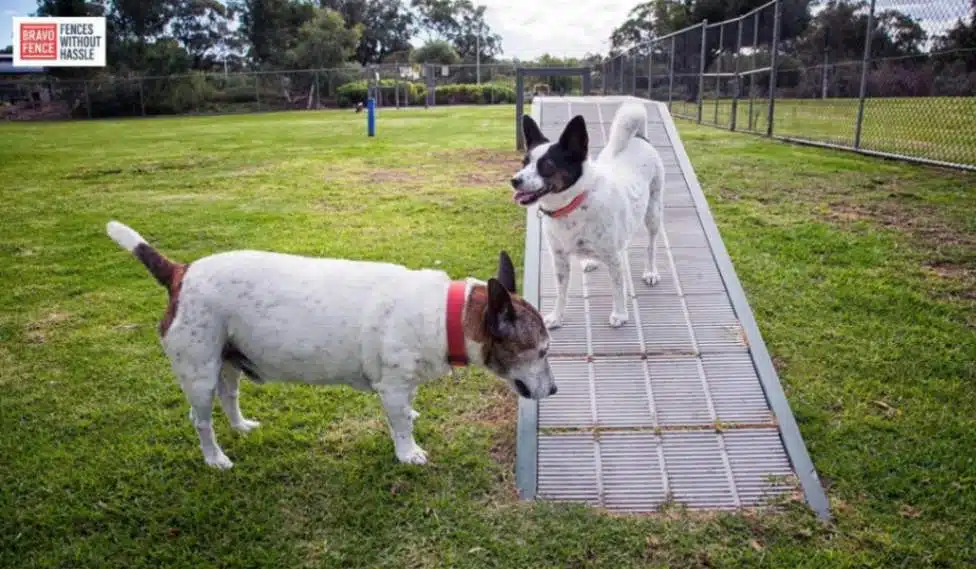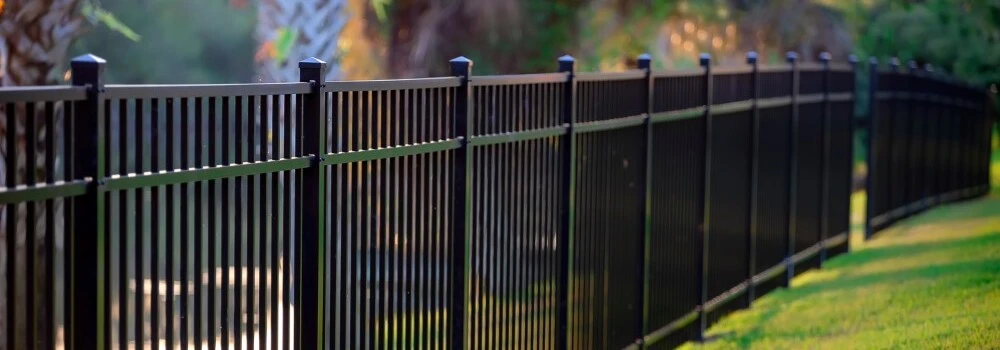
Creating a Dog-Friendly Fenced Yard with the Best Fence Options
The most critical requirement for your pet dog to be secure, well, and happy is a dog-friendly fenced yard.
A good fence is used as confinement for your pet and as an outdoor area for comfort and freedom to play, exercise, and get fresh air.
With proper fencing, you can rest knowing that your furry best friend is secure and safe from the potential threats outside and will not escape or get injured.
The article below discusses the best dog friendly fencing options, factors to consider in planning a fenced yard, and maintenance tips to keep your dog’s space secure and fun for many years.
Why You Need a Dog-Friendly Fenced Yard
For any dog owner, access to the outdoors will prove key to promoting your pet’s physical and mental health.
A dog-friendly fenced yard offers several important benefits:
Safety
A fence will protect your dog from running out into traffic, wild critters, or getting lost.
Even the best-trained dogs may chase a squirrel without a safe wall or get lost.
Freedom to Roam
Dogs are dogs because they love to roam; thus, a good fenced yard provides a place to exercise their curiosity while getting plenty of exercise and remaining off-leash.
Behavior Control
If your dog barks or gets worked up at the sight of other dogs or stimulation, a great fence will curb triggers by reducing what he sees or exposing him to outside stimuli.
Peace of Mind
This guarantee will ensure that your dog is safe and can play alone, allowing you to engage in other activities without constantly checking for their safety.
What to Consider in Selecting Pet-Friendly Fencing

When choosing the right material for fencing a dog-friendly yard, caution should be applied. Here are some considerations:
Dog Size and Breed
Various breeds of dogs have different needs.
For example, German Shepherds or Labradors might need high fences to prevent them from jumping over.
Small-sized dogs, however, will not require such high fences. Strong diggers, for example, might also need additional fencing below to prevent them from escaping beneath the wall.
Preventing Escape
There are escape artists, dogs that can jump over a typical fence and dig themselves out underneath.
Prevention will require the wall to be high enough and reinforced at the bottom: options like an L-footer on chain-link fences or burying chicken wire can discourage digging.
Longevity and Upkeep
The life and upkeep of your fence go a long way.
While some materials, like wood, may look great initially but always require upkeep to prevent decay and insect damage, others, such as vinyl and chain link, are longer-lasting and need less maintenance but cost a little more to install.
Visibility and Privacy
While some dogs like having a view of whatever is going on outside their fence, others require more privacy created by the wall.
If your pet gets excited at the sight of passersby and barks incessantly, it is better to opt for a wood or vinyl fence to minimize distractions and reduce barking.
Cost and Aesthetics
What you decide to place around your home must fit in with the general style of the house, but it also has to work within your budget.
Wood and vinyl provide good customization options, and while chain-link fences are cheaper, they may not complement some home styles.
Dog-Friendly Fencing Options
One can opt for many popular fencing options depending on the needs and requirements.
Wooden Fencing
Wooden fencing is traditionally beautiful for any setting.
It can be considered a strong dog fence, giving the pet much-needed seclusion from outside influences to keep him occupied.
Because customizing is allowed with wood, one can opt for varied styles and heights to create the desired fence for your home.
Pros:
- Offers brilliant privacy
- Any style or size can be accommodated
- Limits the conditions that trigger barking
- Suitable and adequate for aggressive or energetic dogs
Cons:
- Requires regular upkeep, like staining or sealing, to avoid rotting and decaying
- May be costly compared to some other options
- Susceptible to weathering and pest infestation, hence shortening its life
Chain Link Fence
Chain link fence is tough, cheap, and offers a good view with next to no maintenance.
Since chain-link fencing allows the dogs to see what is outside, it can be reassuring for some dogs because it reduces anxiety as their line of vision enables them to see all the activity.
However, privacy slats can be attached to the chain link if you prefer more privacy.
Pros:
- Durable and enduring
- Cost-efficient
- Less maintenance because it doesn’t need repainting or restaining
- Privacy slats can be added for seclusion
Cons:
- Not as private as a wooden fence
- May not blend well with the aesthetic of the house
- Dogs may dig under the fence
Vinyl Fencing
More and more pet owners enjoy vinyl fencing due to its durability, low maintenance, and beautiful looks.
Vinyl panels offer the same benefits as wooden fences in terms of privacy and sound insulation but without the need for continuous maintenance.
Pros:
- Highly durable and resistant to weather, rot, and insect damage
- No painting or staining required, making it low maintenance
- Offers excellent privacy and sound insulation
- Available in various colors and designs to fit your yard
Cons:
- Higher initial cost than other materials
- Less flexible in design compared to wood
Metal Fencing: Aluminum or Wrought Iron
A metal fence, including aluminum or wrought iron, is a good option for a more decorative look.
Such fences are strong and durable but might provide less privacy than wooden or vinyl fences.
Pros:
- Very strong and durable
- Gives a decorative look
- Requires minimal maintenance
Cons:
- Less privacy compared to wood or vinyl
- More expensive than chain link or wood
- Small dogs may escape through the bars
How to Care for Your Dog-Friendly Fence
Once you have the right fence installed in your dog-friendly yard, you need to take proper care of it to ensure it continues to provide a safe space for your pet.
Periodical Review
Periodically walk along the fence line to check for damage, loose boards, rust spots, or sharp edges.
Early detection of wear and tear gives you a chance to make repairs before minor faults become major hazards.
Avoid Digging
For digging breeds, install an L-footer or bury the lower area around the fence with chicken wire.
Large rocks or paving stones along the bottom of the fence can prevent digging and escape attempts.
Rust Inhibitor
If you have a chain-link or metal fence, regularly inspect for rust, especially in wet or humid environments.
Treat any rust spots with a rust converter and repaint them to prevent further corrosion.
Secure Gate Latches
All gates must be closed and latched securely, as a faulty latch could allow your dog to escape.
Cleanliness
Keep the area around your fence clean and free from debris or waste that could damage your fence or pose a danger to your dog.
Conclusion
A fenced yard is not just a boundary but a safe place where your dog can enjoy the outdoors, exercise, and satisfy curiosity without the risk of injury or escape.
Whether made of wood, chain link, vinyl, or metal, the right fence will depend on your dog’s requirements and your yard’s layout.
Considering factors like durability, privacy, and maintenance will help you create an outdoor haven that benefits both you and your dog.
FAQs
What’s the best type of fence for a dog?
The best fence depends on your dog’s size, behavior, and your yard’s needs. Wood offers privacy, vinyl provides durability with low maintenance, and chain link is cost-effective and durable. Consider your dog’s habits, such as jumping or digging, when choosing. By these factors you can decide the best fence for your dog.
How tall should a dog fence be?
A minimum of 6 feet is recommended for medium to large-sized dogs as they will probably be able to jump over it. Four-foot fences would be enough for smaller breeds. The chosen height depends on the breed, jumping ability, and the dog’s actual behavior.
Can a dog climb over a chain-link fence?
Some dogs are agile and can climb chain-link fences pretty easily and relatively quickly. To prevent this, fit your dog with a robust fence topper or even just some privacy slats that will make climbing hard and deter him from escaping. Monitor your dog’s behavior closely for the comfort and safety of your dog in the yard.
How to prevent dogs from digging under the fence?
You can also dissuade your dog from digging through the fence by burying the chicken wire or hardware cloth deep down at the bottom so that it discourages your dog from escaping. You can place huge rocks or paving stones at the bottom of the wall, making it difficult for the dog to tunnel underneath and, simultaneously, discourage digging. Be sure to check the area occasionally to ensure these barriers stay in place and perform their intended function to keep your dog safe and secure.
Do you need permission to build a dog fence?
Install a dog fence in a location requiring a specific permit, depending on the area. Contact your local government or homeowners association for possible fence height and material restrictions regarding occupancy. This will help you avoid fines and ensure your fence safety standards are met. Always ask the officials before you start your installation process to make things smooth.
Tags: Explore Helpful Resources on Yard Fencing For Dogs, Inspiration and Tips on Secure Fencing For Pets, Top Ideas and Insights About Dog Friendly Fences, Top Ideas and Insights About Pet Friendly Yard

